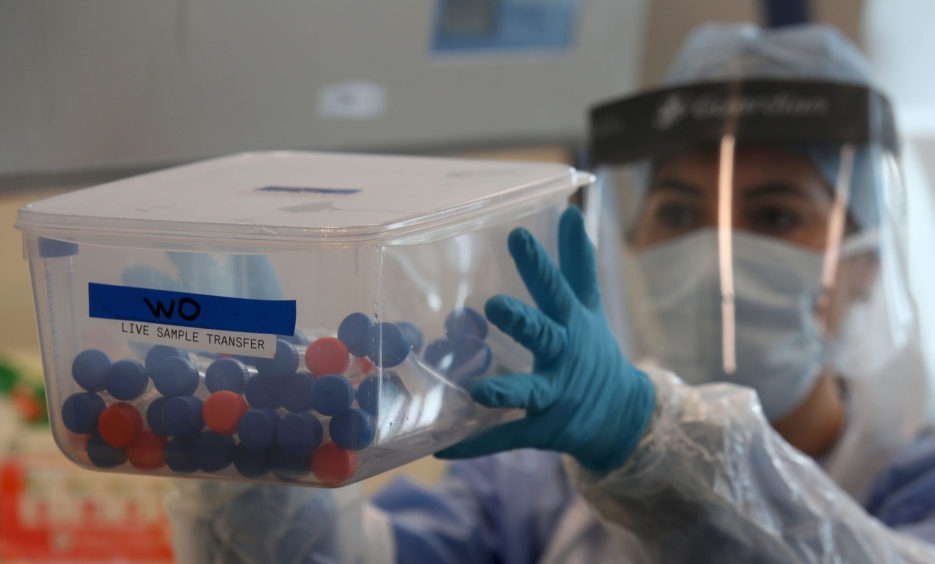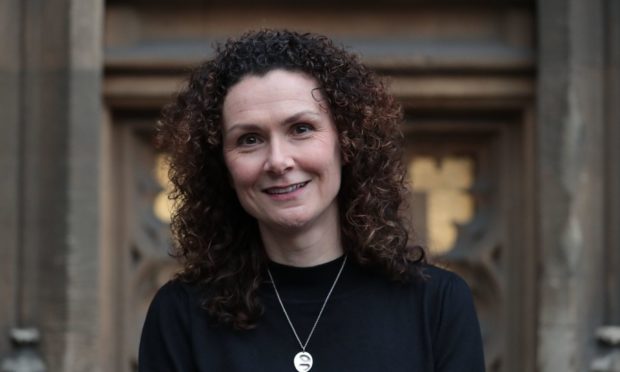A Fife MP has claimed the UK Government’s inability to provide data on the number of people tested for more than a week is a “scandal”, following criticism from Britain’s statistics watchdog.
It comes as Health Secretary Matt Hancock has been rebuked by the UK Statistics Authority over figures which are “still far from complete and comprehensible”.
Chairman of the organisation Sir David Norgrove criticised the way the figures are presented at the daily Downing Street briefings, with the headline total including both tests carried out and those which have been posted to recipients but not yet conducted.
The UK Government has not provided figures for the numbers tested for over a week now, only the number of tests carried out, with some patients requiring several tests.
North-east Fife Liberal Democrat MP Wendy Chamberlain said: “News that testing data is misleading comes as no surprise, given that ministers have been unable to provide even top-line figures for the number of people tested for over a week now.
“This is a scandal.
“On top of this – at the very moment the government is easing lockdown – the test, trace isolate system that is vital to keeping people safe has yet to be proven effective.
“With public confidence already shattered from the Cummings scandal, the fight against coronavirus has become much harder.
On top of this – at the very moment the government is easing lockdown – the test, trace isolate system that is vital to keeping people safe has yet to be proven effective.”
Wendy Chamberlain, North-East Fife MP.
“To restore any faith in ministers’ ability to manage the Covid-19 crisis, they must be absolutely transparent about the guidance informing crucial decisions, the trade-offs they are making when it comes to easing lockdown, and what effort is being made to get critical systems up and running.”

The UK Government has hit targets aimed at carrying out 100,000 tests a day by the end of April and having the capacity for 200,000 tests of various kinds by the end of May.
However, Sir David said the testing statistics still fall “well short” of its expectations.
He added: “The data should tell the public how effectively the testing programme is being managed.
“The way the data are analysed and presented currently gives them limited value for the first purpose.
“The aim seems to be to show the largest possible number of tests, even at the expense of understanding.
“It is also hard to believe the statistics work to support the testing programme itself. The statistics and analysis serve neither purpose well.”
The aim seems to be to show the largest possible number of tests, even at the expense of understanding.”
Sir David Norgrove, chairman of the UK Statistics Authority
Sir David said there is a lack of data on how many of the tests posted out are, in fact, then successfully completed and the date when tests are carried out.
He also called for test results to include information on what kind of employment people were in – for example, care home or medical staff – their age, gender and location.
The Scottish Government only publishes figures on tests actually carried out and does not currently include figures on home testing kits issued to people in Scotland.
However, it does not provide testing data on location, age, gender or location and only published this data for confirmed Covid-19 cases but “further consideration” is being given to what further data could be provided in the future.
Mr Macdonald added that more data need to be released from both governments in order to better understand the spread of the virus.
He said: “The Scottish Government does not include tests that have not yet been done at home in their numbers but they could do more in terms of providing understanding in terms of geography, age and occupation.
“I think we’re all anxious to know what the prevalence of the virus is, not just for the country as a whole but in particular areas, occupations and in age groups.
“That information can only help.”
Meanwhile, Moray MSP Douglas Ross raised concerns about testing rates in Scotland during a statement in the House of Commons on Tuesday.
He said: “It’s staggering that in Scotland we have capacity to carry out 15,500 tests for Covid-19 a day, yet the SNP Government’s most recent daily figure shows they have managed less than 3,000.
“This a woeful and alarming figure when we have care homes in Moray struggling to get tests for staff and residents and others who have had trouble accessing tests as well.
“The UK Government has assisted the SNP administration throughout this crisis to enable them to use their capacity and I’m pleased the UK Health Secretary agreed to continue to do everything we can to support the Scottish Government.”
A Scottish Government spokeswoman said: “We expect testing numbers to fluctuate from day-to-day and, over the last seven days, the average number of tests in NHS labs was the third highest to date.
“Tests at the drive through and mobile centres are demand led and the number of people tested there depends on the numbers of people with symptoms coming forward for testing.
“Over the last seven days, we have seen the lowest number of positive cases since March 16 (262 in total) and this general trend is likely to affect testing numbers.
“We know that Scotland continues to have a higher testing rate in NHS labs than the rest of the UK – with Scotland’s testing rate at 31,052.38 per million, compared with a UK-wide testing rate of 25,967.43







